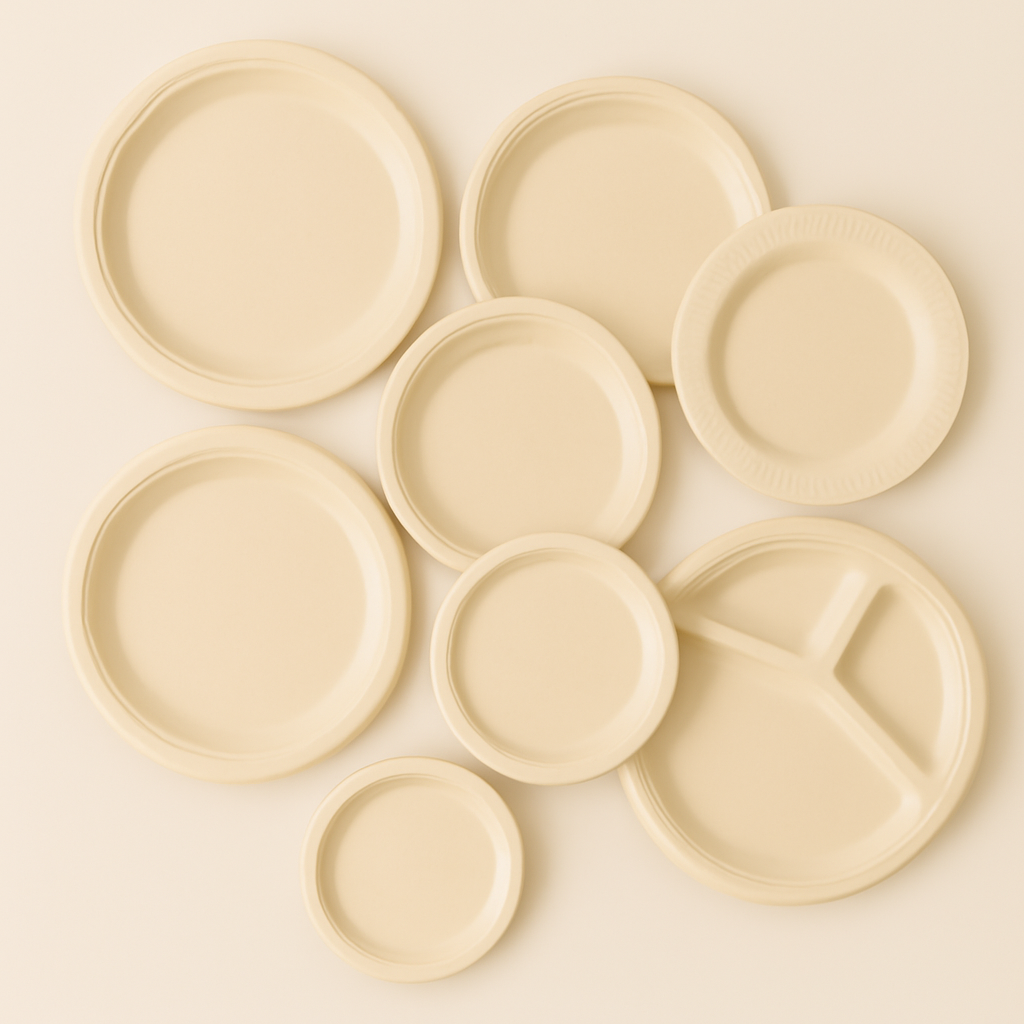
Choosing the right disposable plates is key for your food service. It impacts both customer experience and your bottom line.
Selecting the right disposable plates can make or break your event or business, affecting sustainability, cost, and overall success.
Want to ensure the best plates for your next event or restaurant? Read on for a full guide to make the best choice.
How do you determine your specific needs for disposable plates?
The right choice of disposable plates depends on the event type, food, and audience. It’s important to evaluate these factors for a tailored solution.
To get the best plates, you must understand the event type, food characteristics, and guest size.
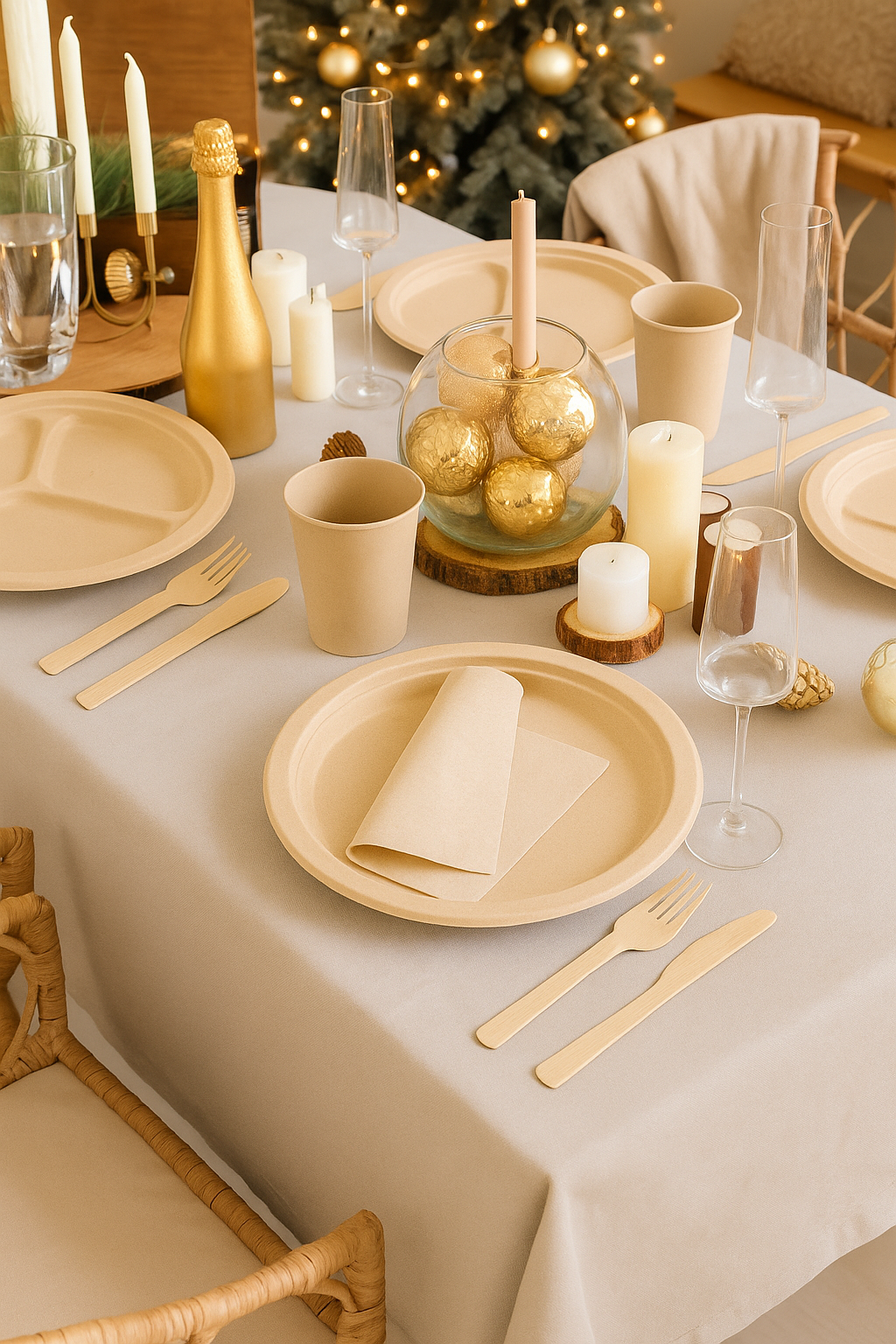
Event Type: Tailoring Your Plate Choice
For a wedding or corporate dinner, you’ll need sturdy, elegant plates to match the occasion. However, for casual gatherings like BBQs or parties, you can use lighter, more colorful options. The right plates create the desired ambiance and leave a positive impression.
Food Type: Plate Durability
Think about the food being served. Saucy or greasy dishes will need plates that resist oil and moisture. On the other hand, dry foods like salads or sandwiches will need less sturdy plates. Choosing a plate that complements the type of food being served ensures the durability of the plate.
Audience Size: Accurate Estimation
Estimating the right portion sizes and plate sizes based on expected guests can prevent waste or shortages. Consider guest preferences and dietary needs to make sure you choose the correct quantity and type of plates. Ordering in bulk can save costs, but over-ordering can lead to unnecessary waste.
What are the right plate sizes for your event?
Understanding the right plate sizes is essential to creating a smooth dining experience. Different sizes serve different needs, so it’s vital to pick the right one.
Choosing the right plate size enhances the dining experience and improves guest satisfaction.
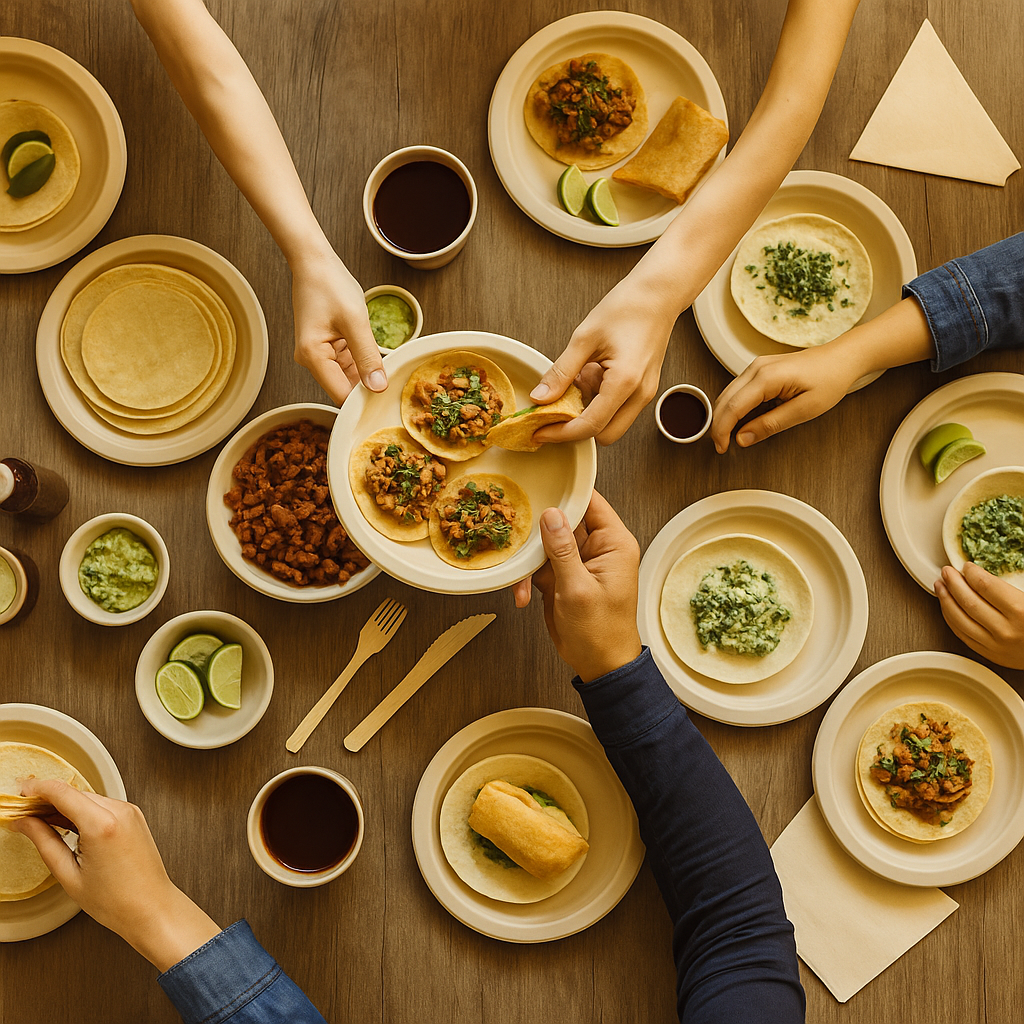
Common Plate Sizes and Their Applications
Here are some general guidelines for selecting the ideal plate size:
| Plate Size | Ideal Use Case | Typical Dimensions |
|---|---|---|
| Dessert Plate | Snacks, appetizers, desserts | 6-7 inches (15-18 cm) |
| Lunch Plate | Light meals, side dishes | 7-9 inches (18-23 cm) |
| Dinner Plate | Main courses, buffets | 10-12 inches (25-30 cm) |
| Platter Plate | Sharing, large servings | 10×12 inches (25×30 cm) |
For events featuring multiple courses, providing different plate sizes for each course can enhance the dining experience. You may want to include dessert plates for sweets and small appetizers, while larger dinner plates are ideal for main courses.
What materials should you consider for your disposable plates?
Choosing the right material is essential when selecting disposable plates. It affects durability, environmental impact, and food compatibility.
Different materials offer unique benefits, and understanding these differences is crucial for making the right choice.
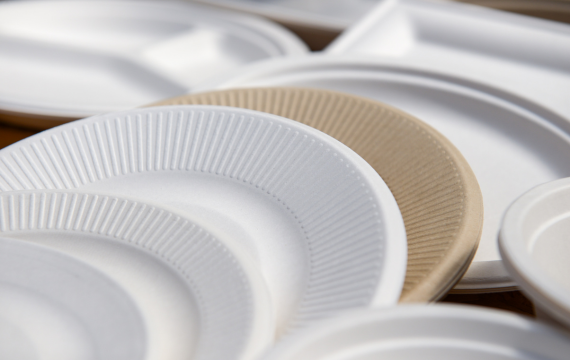
Biodegradable/Eco-Friendly Materials
Biodegradable materials like bamboo, sugarcane, or bagasse are great for businesses looking to enhance their sustainability. These options are typically free from harmful chemicals and microwave-safe, making them ideal for eco-friendly food service. They are fully compostable, and they show your brand’s commitment to sustainability.
Plastic Plates: Strength and Durability
Plastic plates, especially those that are BPA-free and food-grade, offer strong resistance to oil and moisture. While they are durable and affordable, it’s essential to ensure they meet health and safety standards. However, plastic is not the most eco-friendly option.
Paper Plates: Cost-Effective but Limited
Paper plates are the most budget-friendly option. They are ideal for dry foods and casual events. However, their durability can vary, and thicker, coated versions perform better with moist foods.
The Environmental Factor: Sustainability Matters
When selecting a material, always keep sustainability in mind. Using eco-friendly options like bamboo or sugarcane aligns with modern consumers’ preferences for environmentally responsible choices. Customers are increasingly drawn to businesses that use sustainable products, enhancing your brand’s reputation.
How do shapes and designs impact your choice?
The shape and design of your disposable plates should align with the event’s theme and food. These factors influence both practicality and presentation.
A well-designed plate enhances both the visual appeal of the food and the overall experience.
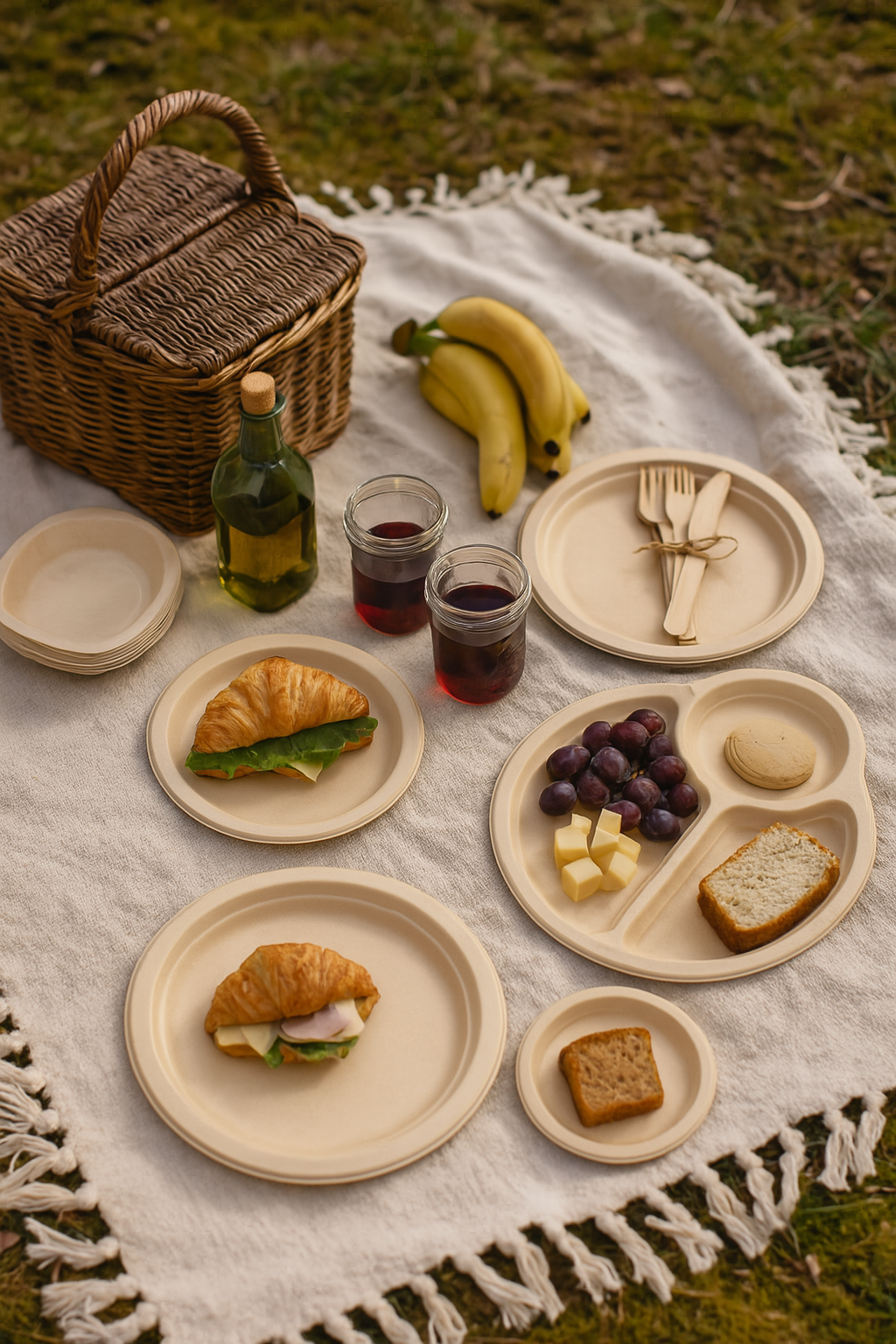
Popular Plate Shapes and Their Purposes
Round plates are classic and versatile. They are suitable for most events, from casual to formal. However, square, rectangular, and oval plates offer a unique touch and are great for showcasing elegant meals or modern dishes.
Color: Plate Color vs. Food Presentation
The color of your plates should complement the food. Neutral-colored plates work well for vibrant dishes, as they allow the food to stand out. On the other hand, colorful plates can add a pop of fun when serving lighter or bland foods.
Compartment Plates: Convenience for Mixed Dishes
For events where guests are offered a variety of foods, using compartment plates can be a great solution. They prevent sauces and foods from mixing, making them a practical choice for catering services and buffets.
How can you buy in bulk and save costs?
Buying in bulk is an effective way to save on costs for large events or regular food service. But there are strategies to make sure you get the best value for your investment.
Smart bulk buying can save you money while ensuring a steady supply of quality plates.
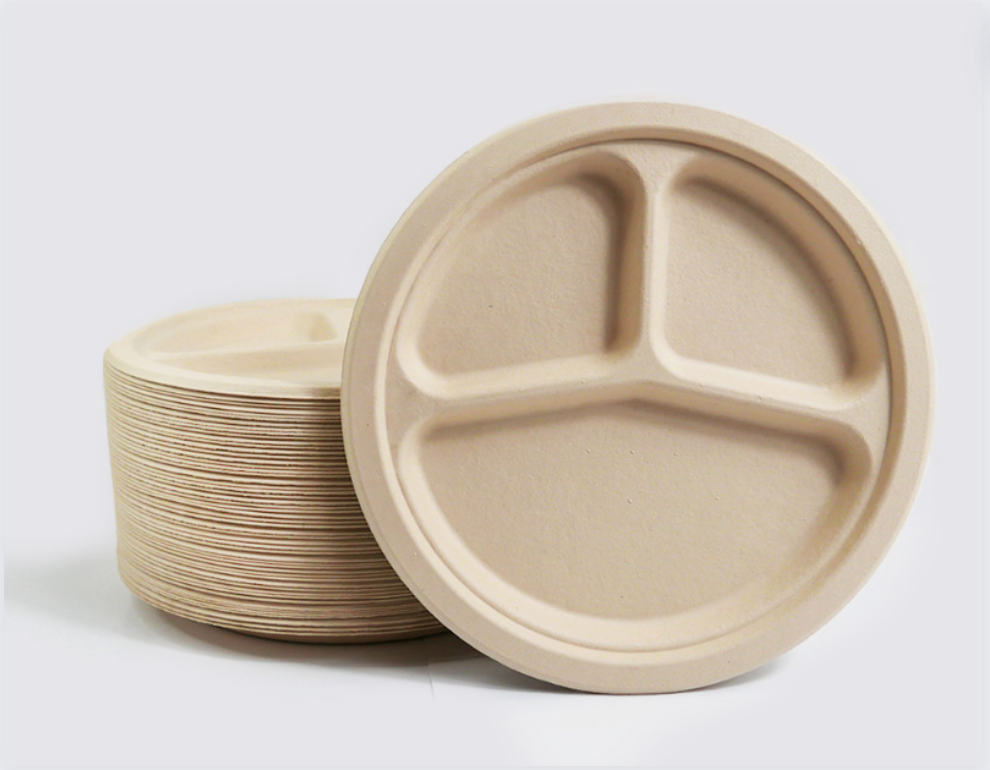
Assess Your Needs: Order the Right Quantity
Before placing a bulk order, it’s important to estimate the number of guests and the type of meals you’ll be serving. Order enough plates to meet your needs without over-ordering. This can help avoid excess inventory, which could lead to waste.
Quality Over Price: Invest in Durability
While it’s tempting to go for the cheapest option, investing in stronger, more durable plates can reduce costs in the long run. Quality plates are less likely to break, leak, or create other issues, saving you from having to replace them frequently.
Plan Ahead: Ordering in Advance
Avoid last-minute ordering by planning ahead. Ordering early allows you to secure the best prices and avoid any unforeseen delivery issues. Be sure to store your plates in a dry, clean area to maintain their quality.
What sustainability certifications should you look for?
When choosing plates, it’s important to check for environmental certifications to ensure they meet sustainability standards.
Sustainable certifications can help demonstrate your commitment to the environment and appeal to eco-conscious customers.
Key Certifications to Look For
Look for certifications like EN13432, OK Compost, or BPI-certified plates. These certifications confirm that the plates are compostable and meet specific environmental standards. For European markets, certifications such as these are often required.
Consumer Appeal and Brand Image
Offering certified eco-friendly plates can improve your brand’s image. Customers today are more environmentally aware and are more likely to choose businesses that use sustainable products. As plastic bans continue to grow globally, these certifications can help your business stay ahead of the curve.
How do you choose the right supplier for disposable plates?
Choosing a reliable supplier is essential for ensuring the consistent quality of your disposable plates.
Finding a reputable supplier can save you time and money in the long run.
Reputation and Consistency
Work with suppliers who have a solid reputation for delivering high-quality products on time. A trusted supplier will also be able to offer support and handle any issues that arise.
Customization Options
If you want unique plate designs or specific sizes, choose a supplier that offers customization. Custom plates can help elevate your event or business by aligning with your branding and specific needs.
Bulk Discounts and Pricing
Leverage bulk purchasing options to get the best pricing. Many suppliers offer discounts for large orders, which can reduce costs significantly. Make sure to compare pricing from different suppliers to find the best deal.
Conclusion
Choosing the right disposable plates requires balancing cost, presentation, and sustainability. Consider event type, material, and supplier reliability to make the best choice.

Ann
Hi, I’m Ann, and with over 5 years of experience in the foodservice industry, I’ve had the pleasure of working with restaurants and catering businesses to develop eco-friendly, tailored solutions that help you thrive in today’s green economy. I’m passionate about sustainability and committed to providing high-quality products that align with your values.
If you’re looking to make the switch to eco-friendly, sustainable tableware, I’m here to help! Reach out today, and let’s explore how we can support your business’s goals while contributing to a healthier planet.

